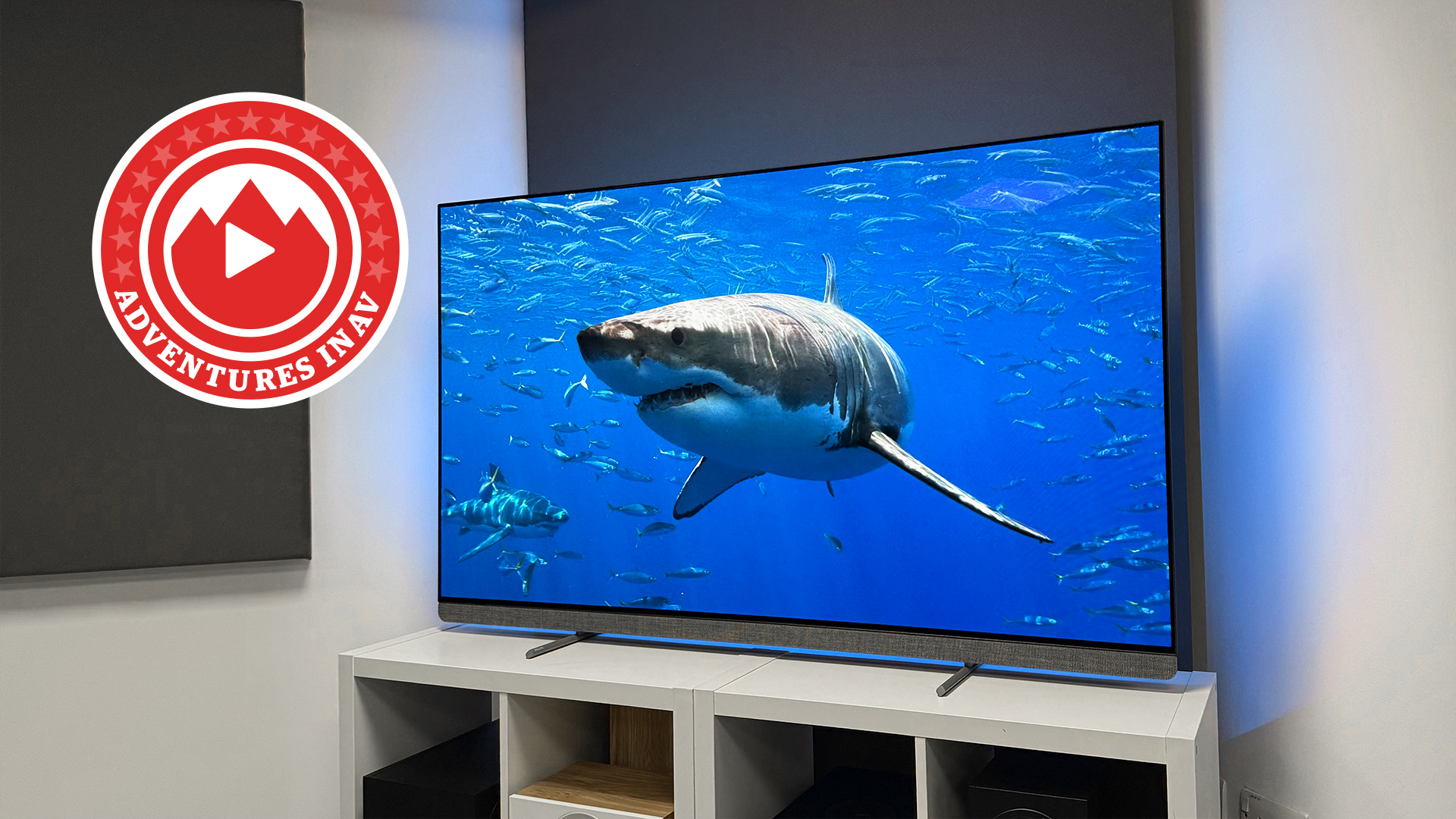What Hi-Fi? Verdict
While it may not have its full complement of features just yet, the Yamaha RX-A2A is still well kitted out and delivers exciting audio
Pros
- +
Agile and responsive
- +
Spacious but focused presentation
- +
Exciting character
Cons
- -
Lacks authority
- -
HDMI 2.1 features require updates
Why you can trust What Hi-Fi?
The Yamaha RX-A2A has been a long time coming. Thanks largely to the pandemic, it's been three long years since its predecessor was first launched – an aeon in tech terms.
Much has changed in that time, too. Most notably, we've seen the arrival of 8K TVs and next-gen consoles, both of which are capable of handling new, more advanced video formats. Seeing as an AV receiver sits at the heart of a home cinema system, ideally connecting every component to the screen, it's vital that it can handle every format that's thrown at it – or that might be thrown at it within the next few years.
The RX-A2A is part of Yamaha's premium Aventage range, with 'Aventage' being short for 'AV entertainment for a new age', so it's under even more pressure than most to deliver fancy format goodness. It's the most affordable Aventage model, though, so there are cost constraints involved – Yamaha can't simply throw the kitchen sink at it and still hit the competitive price it's set.
All of which has led the company to get impressively creative, delivering HDMI 2.1 features via lower-bandwidth sockets. Some of these features are handled natively, while some use technology called Display Stream Compression, or DSC for short. At least, the RX-A2A will handle these features once a number of updates have been applied.
Until then (and afterwards, for that matter), the RX-A2A needs to work extra hard to impress us with its sound quality.
Build
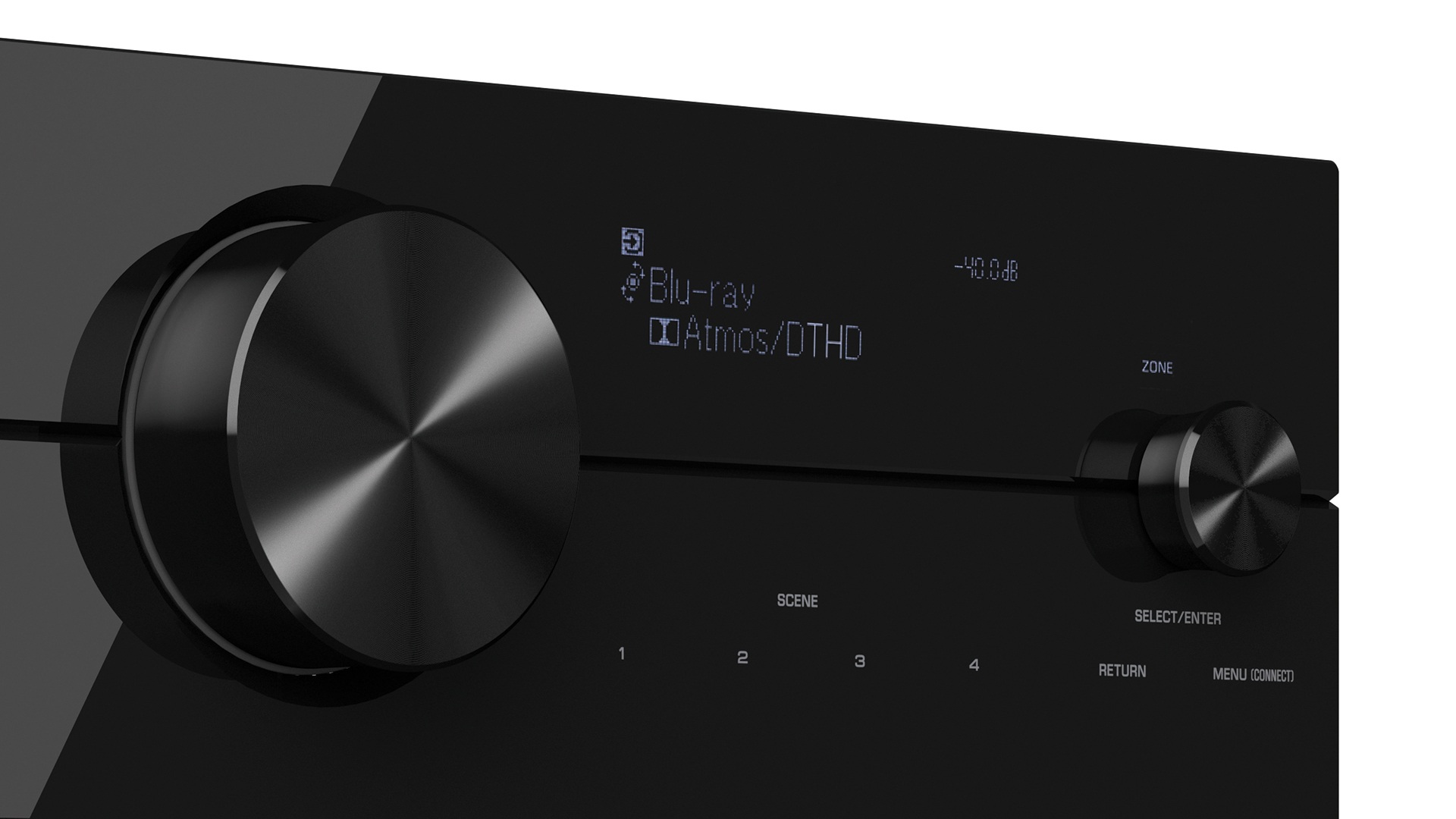
Even before we get to the listening, the RX-A2A has impressed us with its looks. The Aventage range has had a full aesthetic revamp since last we saw it. The wide central display with small lights and logos has been replaced by a solid reflective front panel sporting a large central volume control with an input select dial and large text LCD display on the right.
Also removed is the cover flap to conceal inputs and controls. The few front-panel sockets remaining are a 6.3mm headphone jack, a USB-A port with 5V charging, and a mini-jack to plug in the microphone for Yamaha’s YPAO auto-calibration. While the materials don’t feel particularly premium the design is sleek and glassy with only the vented top surface betraying its plastic origins.
The latest hi-fi, home cinema and tech news, reviews, buying advice and deals, direct to your inbox.
The remote control has also had a makeover and is both tactile, cleanly laid out and extensive in its inclusion of easily available functions. Navigating the menu and settings without having to access the full onscreen menu from a connected device is straightforward, and many (but not all) of the system settings can be accessed using Yamaha’s MusicCast app, which also allows for streaming of high-res and lossless music formats including Apple Lossless (ALAC) up to 96kHz, WAV, FLAC or AIFF up to 192kHz as well as playback from services including Spotify, Tidal, Qobuz and Deezer.
For more playback options there’s also AirPlay 2 and Bluetooth (SBC / AAC) on board as well as Google Assistant and Alexa compatibility for voice control. And if all that choice is overwhelming and you’d rather let someone else choose the music, there’s a DAB+ and FM/AM tuner.
Features
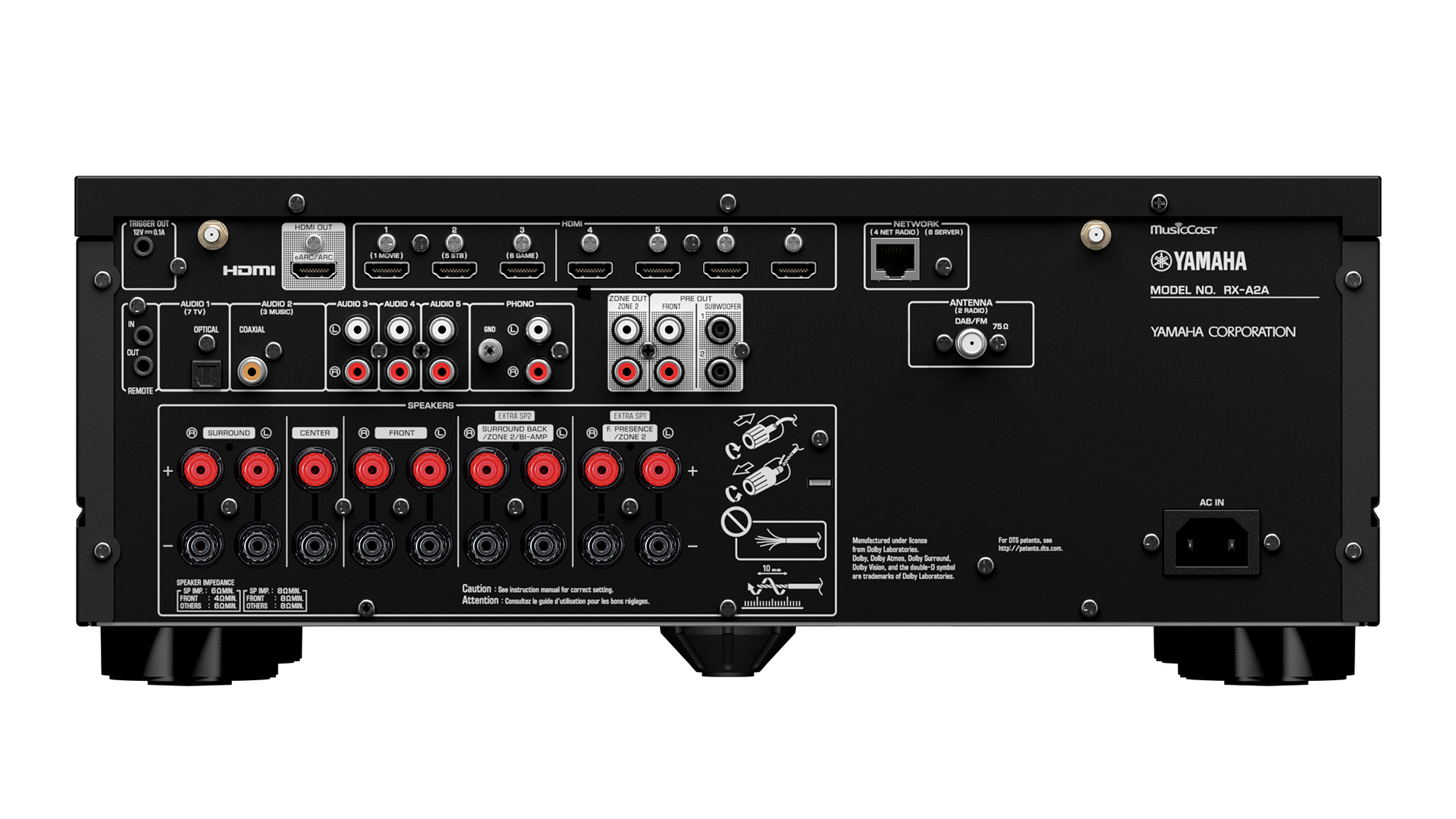
Binding posts for speaker connections are on the relatively uncluttered back plate along with the HDMI inputs and single, eARC-compatible output. There are also three line-level analogue audio inputs, one optical and one coaxial input.
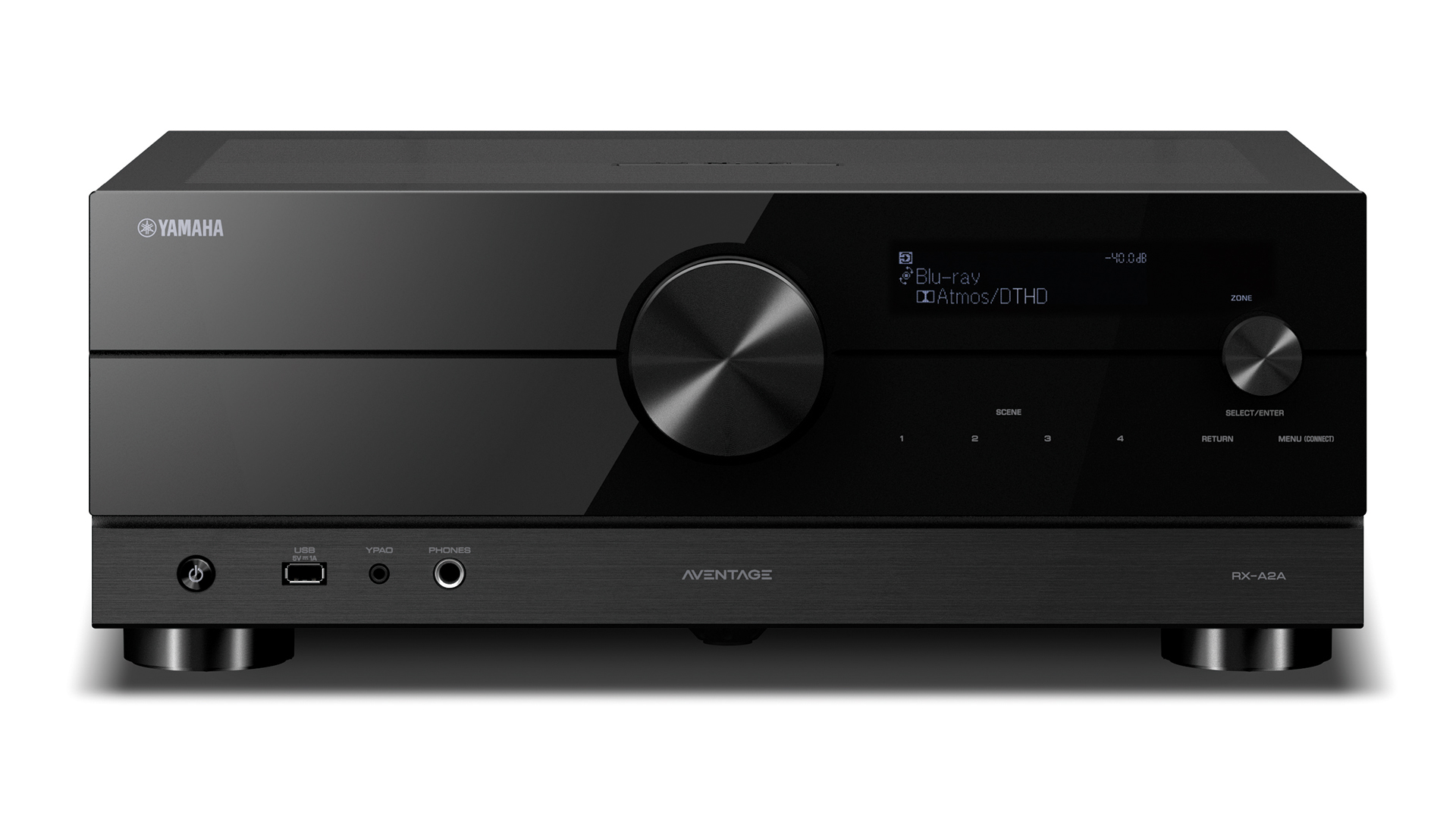
HDMI inputs x7
HDMI outputs x1 (including eARC)
HDMI 2.1 Yes but some features will require future hardware and firmware updates
Power 100W (per channel) into 8 ohms with 2 channels driven
HDR formats HDR10, Dolby Vision, HDR10+ (via future update)
Audio formats Dolby Atmos, DTS:X, Dolby Atmos Height Virtualization
Connectivity MusicCast, AirPlay 2, Bluetooth (SBC / AAC)
For right or wrong, we've all become rather obsessed with HDMI specifications of late, and Yamaha has taken an interesting approach here.
While higher-end models in the Aventage lineup have true HDMI 2.1 inputs, the RX-A2A has lower-bandwidth connections that will use Display Stream Compression – essentially lossless video compression – in order to support full-fat 4K at 120Hz (4K at 120Hz with 4:2:0 chroma will be handled without the need for DSC) and 8K at 60Hz through three of its HDMI inputs.
We'll have to wait to find out how effective the native 4K at 120Hz support and DSC implementation are, though, as those features will be added – along with ALLM (Auto Low-Latency Mode), VRR (Variable Refresh Rate), QMS (Quick Media Switching), QFT (Quick Frame Transport) and HDR10+ – through yet-to-be-dated firmware updates (4K at 120Hz and HDR10+ are expected this autumn, the rest are simply 'TBC').
The RX-A2A will also need a (free) hardware upgrade in order to be made fully compatible with 4K at 120Hz signals from an Xbox Series X or Nvidia RTX30-series graphics card (it's not required for 4K at 120Hz from the PS5), thanks to the models sold so far falling foul of the notorious 4K at 120Hz bug that's also afflicted AVRs from Denon and Marantz.
While this almost certainly looks like an off-puttingly long list of formats that aren't supported out of the box, it's worth pointing out that most of them will only be missed by hardcore gamers who've already boarded the next-gen bandwagon. The RX-A2A will already handle 4K signals at up to 60 frames per second, which no movie source currently goes beyond, and also supports HDR10 and Dolby Vision video formats – plus Dolby Atmos and DTS:X for audio. It bears mention, though, that the Denon AVR-X2700H, which is cheaper than the Yamaha RX-A2A, does support all of the features listed above out of the box, although it too requires a fix for the 4K at 120Hz Xbox bug.
The RX-A2A carries seven full-range channels of power, each rated at 100W into eight ohms in stereo conditions, plus two subwoofer outputs. This allows for 7.1 speaker configurations or, if using the supported Dolby Atmos and DTS:X decoding, a 5.1.2 set-up with two height speakers. While it would be nice to have two more channels to allow for four height channels, very few AVRs offer that at this price point – Denon's most affordable nine-channel AVR is the more expensive AVC-X3700H, for example.
One neat trick up the RX-A2A's sleeve is its ability to power a pair of speakers in another room even when a full 7.1 or 5.1.2 speaker system is connected in the main room. It does this through Intelligent Power Amp Assign, which diverts power from two of the speakers in the main room (the rears in a 7.1 system and the front height speakers in a 5.1.2) when Zone 2 is activated.
For this review, we've listened to the Yamaha in a 7.1, 5.1.2 and stereo configuration, having configured the system using YPAO (Yamaha Parametric room Acoustic Optimizer) to automatically set the speaker levels and distances. While some people will have an installer perform this task the set-up is simple and requires very little manual tweaking afterwards.
Despite the A2A offering 17 different DSP sound modes with exotic names such as ‘Hall in Munich’ and ‘role playing game’ we mainly opt to listen in Pure-Direct mode with minimal processing.
Sound
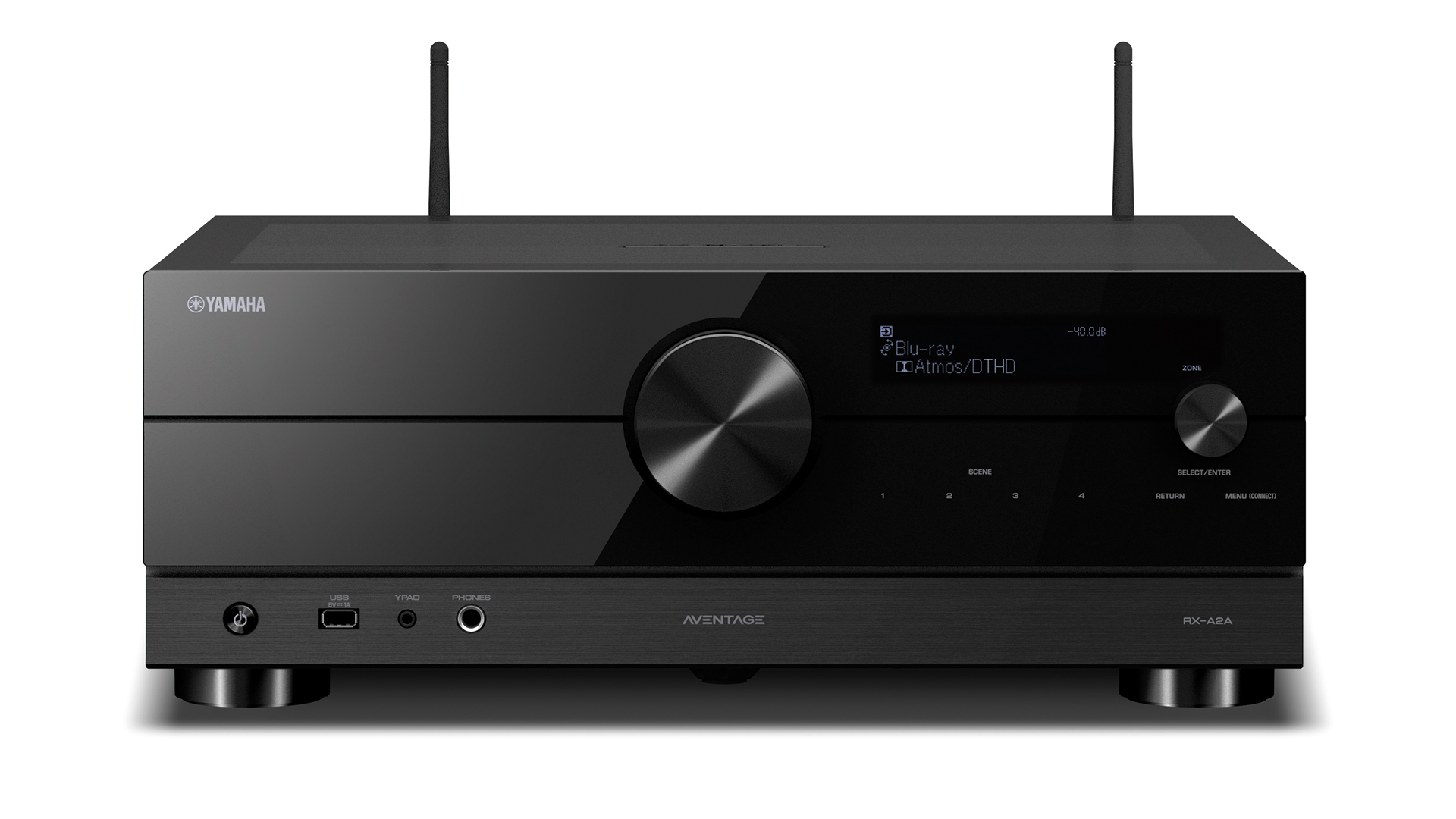
Watching the race from Ready Player One the movement of the motorbike zipping across the sound field feels both wide and precise as it weaves in and out of traffic. The long skids and screeches of these virtual vehicles are pleasingly broad and fizzy, while smaller features of the game such as the controller beeps and coin glissandos are neatly detailed. During big crashes, low frequency information occasionally sounds a bit blunt but there’s still plenty of drama and punch in the explosive action.
When we switch to the opening of Unbroken we notice that the spacious presentation of the A2A sometimes means that as the action moves around the aircraft, from inside to outside, the contrast isn’t as marked as when listening on the Award-winning Denon AVC-X3700H (£999, $1199, AU$2699), but the directionality and focus are excellent. In such a noisy scene the dialogue can get lost but here it has a strong clarity that easily engages the viewer.
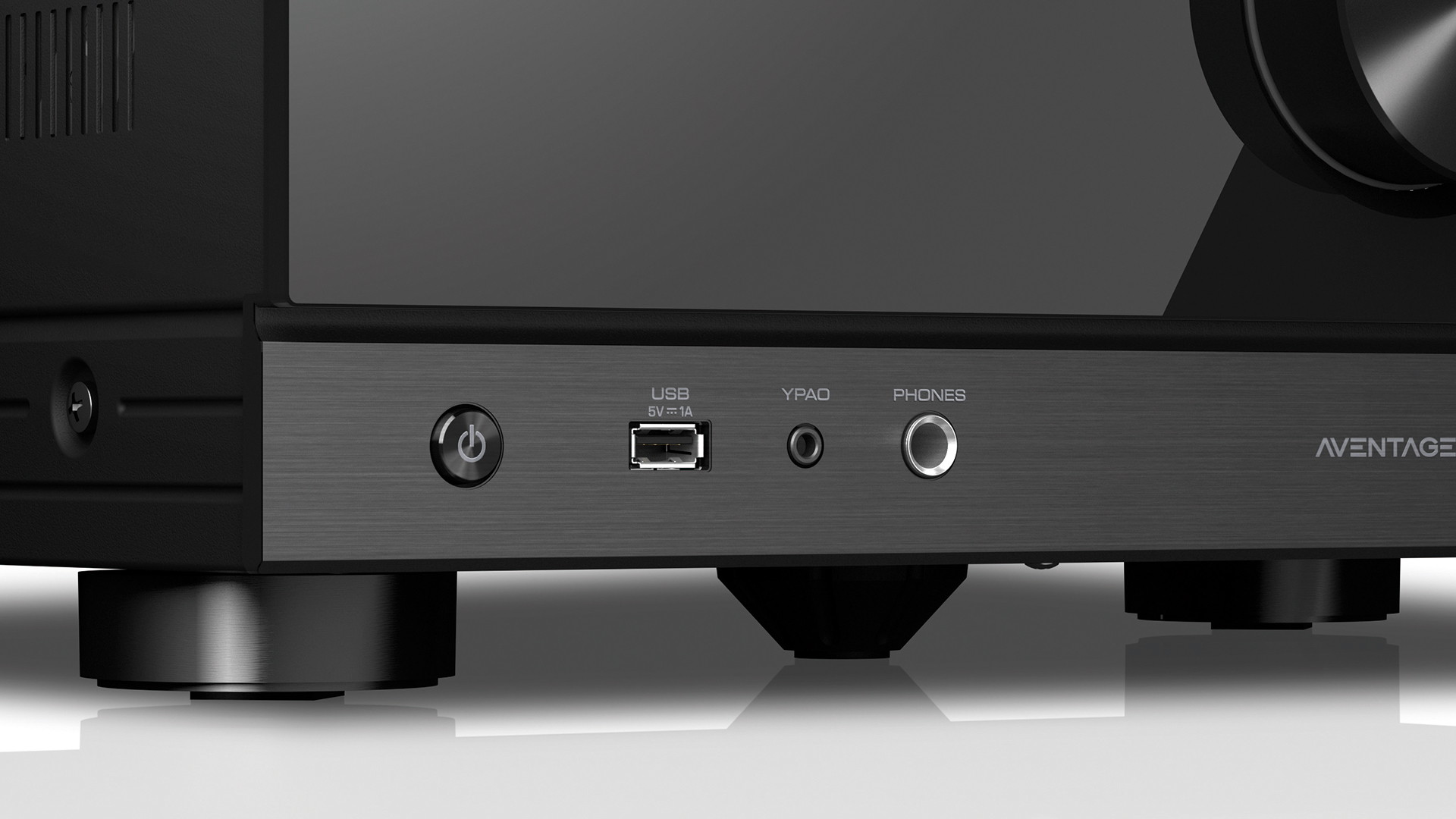
Swapping to music, the A2A projects the duelling, rapidly-picked acoustic guitar and skipping bongos of Nick Drake’s Cello Song with scintillating rhythmic panache, while the more lyrical elements such as the doleful cello and pizzicato bass are expressive and articulate. This is also true here of the hushed vocal, although it feels a touch receded and missing some of its spine-tingling proximity. When we listen to the same track on the Denon, the close mic’d singing has more intimacy and greater tonal depth, though overall the track isn’t as musically nimble as on the Yamaha.
We try the airy electronica of Dizzy by Bedouine and the reverberant layers of strings sound spacious and vast, especially in the sections where they burst out of the arrangement before collapsing. There’s a controlled velocity and attack to the bubbling synths and percussion that creates a nice sense of articulation and, although the A2A doesn’t quite have a grip on the full range of the swirling arrangement, overall it’s dynamically competent, preserving the nuance of more delicate moments along with the strident climaxes.
Verdict
While it may not have its full complement of features just yet, Yamaha has committed to technology upgrades that will keep the A2A relevant in the coming years, enhancing what is an easy-to-use AVR with an immersive soundfield and plenty of musical drive.
SCORES
- Build 4
- Features 4
- Sound 4
MORE:
Want to see how the Yamaha RX-A2A compares with other AVRs? Check out our round-up of best AV Receivers
Read our Denon AVC-X3700H review
Read our Sony STR-DN1080 review
Read our Denon AVR-X2700H review
What Hi-Fi?, founded in 1976, is the world's leading independent guide to buying and owning hi-fi and home entertainment products. Our comprehensive tests help you buy the very best for your money, with our advice sections giving you step-by-step information on how to get even more from your music and movies. Everything is tested by our dedicated team of in-house reviewers in our custom-built test rooms in London, Reading and Bath. Our coveted five-star rating and Awards are recognised all over the world as the ultimate seal of approval, so you can buy with absolute confidence.


